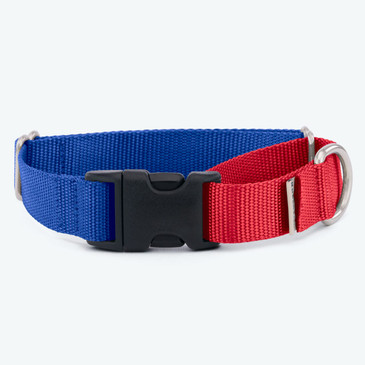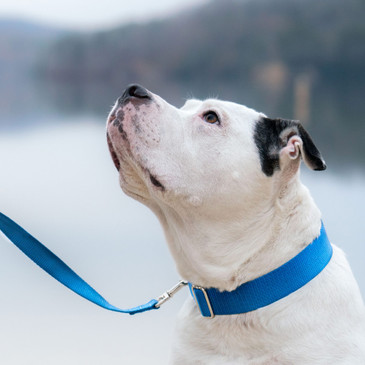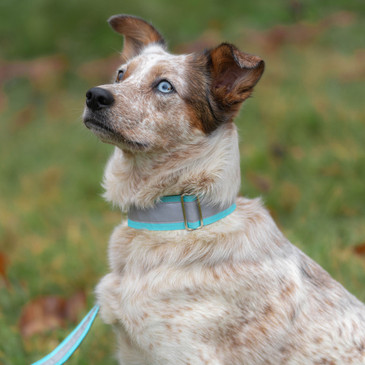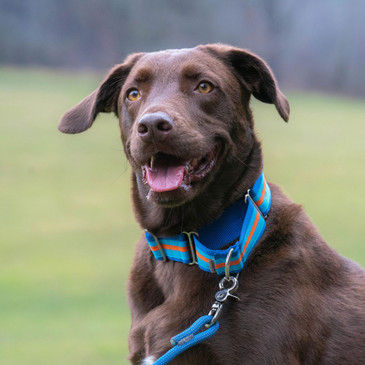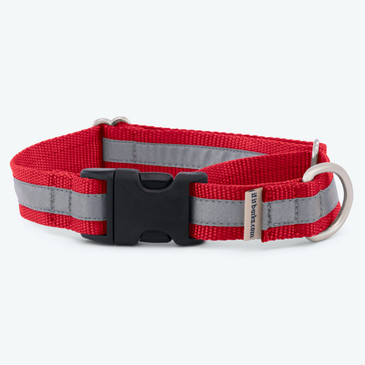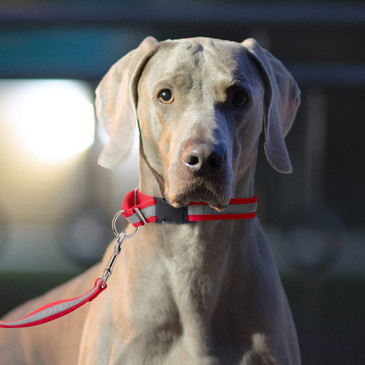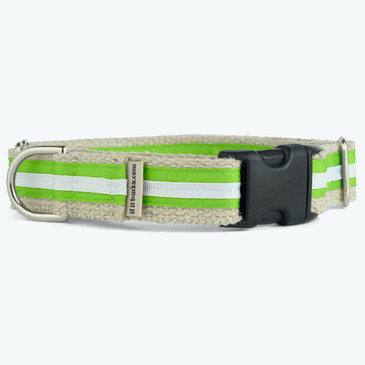Matching Martingale Dog Collar and Leash Sets Are Available!
No-Slip, Escape-Proof, Personalizable

Styles and Colors

Escape-Proof Design

Personalize the Buckle

Why Choose an If It Barks Personalized Martingale?
Style and Safety Combined
No matter what lifestyle you and your dog enjoy, a safe and secure way to take them for a walk is an absolute necessity. With a skittish pup or a tough puller, walks can quickly become a stressful activity for you and your dog. Experienced trainers and rescues recommend our martingale collars because they are the perfect tool to help take back control of your walks. Whether it's a Reflective Martingale for those early morning or late night walks, a Waterproof Martingale for those days on the water, or a boldly designer Designer Martingale, we have something to provide your this safeguard while keeping your pup looking their best. Ready for enhanced control with custom style? Our Striped Martingale Dog Collars infuse a blend of custom fashion and function, ideal for the designer-dog owner who seeks the best of both worlds. Embroidered Martingale Collars offer a clearly written identifier and added flair, ensuring your message stands out. For the eco-conscious pet parent, explore our Hemp Martingale Collars, designed with the planet's (and your pup's) well-being at the front of our minds. All of these collars are reliably safe and comfortable for dogs of all shapes and sizes. If these needs don't apply to your dog, they may be better suited for a flat collar. Check out our flat collar offerings here. |
Thousands of Happy Customers
Your New Collar Is Waiting!
Our comprehensive range ensures that no matter your dog's size, breed, or personality, we have the perfect martingale to suit their needs and your style. Every collar is meticulously handcrafted with love, reflecting our unwavering commitment to quality. If there is a problem with your order, we want to make it right for you.

Standard Flat Collars

Martingale Collars

Escape-Proof Functionality
The genius behind the Martingale lies in its two-section composition - a fixed portion (neck loop) and a control loop. When you attach the leash to the D-ring on the control loop, it adjusts accordingly. This mechanism ensures that the collar tightens enough to prevent your dog from slipping out, even with the most enthusiastic pulls, but will not tighten enough to cause harm.
Training and Manners
Martingale collars shine when you need to remind your pup about leash manners. The functionality of the control loop's gentle tightening discourages constant pulling. If your dog attempts to pull, a gentle reminder from your end can redirect their attention. If they persist, halt your walk momentarily. With time, they'll associate the sensation with the need to walk without tugging. However, if your dog continues pulling, it might be time to seek a professional trainer's guidance for loose leash walking techniques.
IMPORTANT: A martingale collar is NEVER appropriate for tie-out use.
Additional Points to Remember
| Appropriate Uses and Safe Times: Primarily during supervised walks and training. Although highly functional, it's best to remove a martingale collar when your dog is relaxing or playing unsupervised to avoid accidental snags. Adjustment is Key: Like any collar, a proper fit is vital. Ensure that the Martingale offers a snug yet comfortable fit. |

For a standard flat collar or a martingale with a buckle, measuring is a simple process:
For a martingale collar without a buckle:
*If you do not have a soft measuring tape, use a piece of string to do the measuring and then lay it flat to measure with a ruler.

Standard Martingale
Buckle Martingale
Engraved buckle collars are:
- Safer - No snagging or catching while exploring and playing.
- Lighter and Less Bulky - Engraving frees your dog of any additional items being attached to their collar.
- Quieter - No more tag jingle!
- Cost Effective - No need to replace lost tags!
Available Buckle Materials
Aluminum - Aluminum buckles are the most heavy-duty option, providing both style and security in a compact package. Aluminum buckles aren't recommended for saltwater use.
A personalized, engraved buckle promotes the return of your dog in the unfortunate event that they do go missing. It has been reported 33% of all dogs will go missing at least once throughout their lives. Better safe than sorry, we say. |
We offer 3 lines of engraving with 15 characters on each line, offering you space to put your dog's name, phone numbers, microchip information, or whatever other information you deem important.


Choosing the Perfect Collar Width
We generally recommend 3/4" collars for small dogs, 1" for medium to large dogs, and 1.5" for medium to extra-large dogs.
Note: 1" is the most common flat collar width, and 1.5" is the most popular width for martingale-style collars. Collar width is important to consider for your dog's comfort and safety.

At If It Barks, we don't just specialize in creating high-quality, handcrafted, personalized dog collars and martingales. Our passion extends to offering you a wide range of tools to make walks with your dog an enjoyable experience for both you and your furry friend. As a dedicated team of dog lovers, we know the importance of comfort, style, and safety, and that's why our products are designed with those needs in mind. Explore our diverse selection of Webbing Dog Leashes, tailored for strength and durability, or Waterproof Dog Leashes, designed to withstand any weather. Our Rope Dog Leashes offer a classic look and feel, while our Reflective Dog Leashes ensure safety during early morning or late-night excursions. |
Our customizable Dog Harnesses provide an adjustable and secure fit for dogs of all sizes. We also offer a vast array of Pet Tags, ranging from designs featuring lush nature scenes to comically-crafted inscriptions, adding a personalized safeguard to your pet's accessories. Don't forget our handy Poop Carriers and Poop Bag Holders, making those necessary clean-ups a breeze. Plus, you can save by bundling them both into a Walk Kit!



